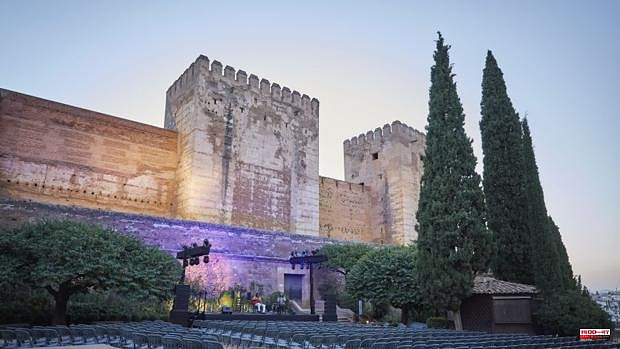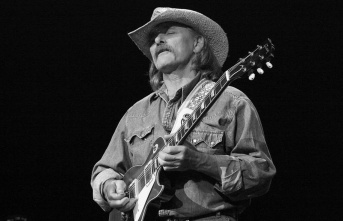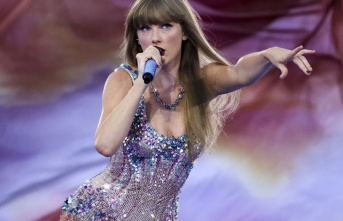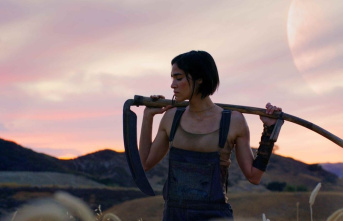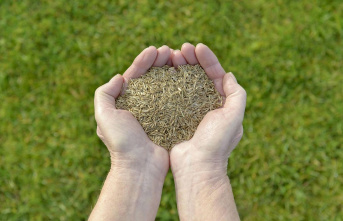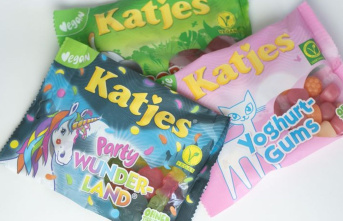The cante is not on the records. Excuse this statement. The voice, like the dance, the guitar and the rest of the instruments that have been incorporated into flamenco, is not consumed, but experienced, as in any culture that has to be understood within a context. The way in which the spectator relates to music at a concert differs greatly from how he does it at home, with a thousand flies to look at, from WhatsApp to the washing machine.
This, in the jondo genre, reaches unsuspected limits. Swords pass through only live, not delayed. People discover through albums, but fall in love live. There is no whiplash greater than the one perceived from the chair, with the artist creating something ephemeral on stage that goes, without distortion or arrangement, for you.
From mouth to ear. Among knowledgeable people, moreover, or with a great curiosity towards that act. The goblins are not in the studios, where they are called the most and they try to capture them, but roaming freely throughout the geography. So you have to be on the lookout.
Summer, in this sense, seems like an ideal opportunity for the discovery, given the great offer that we have. If you liked what Israel Fernández did in La Resistencia, are interested in that woman who came out barefoot at Eurovision years ago, or don't understand why some romantic intellectuals were captivated by these rhythms more than a century ago, get up from your chair and go to the festivals. The best, that's for sure, you haven't seen it yet. And, I'm telling you, the cante isn't on the records. This is not pop, not even a song, but a visceral manifestation waiting to happen. The art for which we are known in the world, but in its natural state.
Rafael de Utrera, Remedios Amaya and El Farru are preparing something to open Al Gurugú (Arahal, Seville, June 9-18). Israel Fernández, mentioned above, will close the event in which he receives the award of honor with Diego del Morao's touch: 'Green, I love you green', as it is called. Do you like smooth and agile echoes, which in their path stain everything with delicacy? He suggested, in the same framework, the Turry, with several albums on the market, but still to break. It is what he will try to do these months: position himself.
At the Granada Music and Dance Festival (June 13-July 10) the echoes of yesterday and today have come together in the warmth of a host of memories. The gala that opens the cycle from the Patio de los Aljibes, where the Cante Jondo Contest was held by Lorca and Falla in 1922 with Manolo Caracol and El Tenazas as winners, will be historic. The veterans José de la Tomasa, Vicente Soto Sordera, Juanito Villar, Rancapino, Juan Habichuela and Miguel Ángel Cortés will meet the youngest: Antonio Reyes, Jesús Méndez, Kiki Morente and Antonio Campos. All in search of old essences. Duquende, Marina Heredia, Mayte Martín and Pedro El Granaíno are others who are scheduled.
The high classicism of La Macanita arrives at the Gazpacho de Morón (June 17) with the electronic and shaved 'jondopunk' that has originated La Tremendita. La Caracolá de Lebrija (July 14 to 23), commemorates 50 years of an emblematic work: 'The word of God to a gypsy', by Lebrijano. And the Puebla de Cazalla Cante Jondo Meeting (July 1-9), with the spirits of Menese and Moreno Galvan tiptoeing around, has La Yiya to invoke them. Also to David Palomar and Rafael Riqueni, among others.
For its part, the Potaje Gitano de Utrera (June 24), the oldest of all, is a rarity for those who do not know it. An enormous capacity, a figure to pay tribute to, this year, María Jiménez, and a nightly stew so that the body endures until well into the morning. Outdoors, of course, listening to Cancanilla de Málaga, Argentina, María Terremoto and many others from the tables.
In the province of Cádiz, the Paco de Lucía International Guitar Encounter, in Algeciras (from June 28) and the Solera y Compás cycle (from July 23), already in Jerez, set the accent. Through Barcelona, Desvaría Nou Barris (July 22-24), with Arcángel, Josemi Carmona in the new jazz project 'Vida' and Rycardo Moreno doing his thing, the sun will take time to set.
There is flamenco inside and outside our borders. At the London Festival (June 20-July 2), for example, venues such as Sadler Wells seem like a perfect showcase of what's on offer: the latest from Rocío Márquez and Bronquio; 'The jump', by Jesús Carmona; Manuel Liñán's party in '¡Viva!'; María Pagés, newly awarded Princess of Asturias; Estrella Morente in her firmament; Tomatito, bailaora Ana Morales... Also at Mont de Marsan (June 27-July 3), around Patricia Guerrero, last National Dance Award, Eva Yerbabuena, La Piñona and Eduardo Guerrero, in addition to Riqueni's closure, closed cast of first level, as in each edition.
In every town, or city, they say in the South, there is a festival. The Flamenco and Fado de Badajoz (July 1-9), which does not remain in the inkwell, is another one of them, like the Lo Ferro (July 14-24), where Jerez-born Ezequiel Benítez has promised honey, el Cante de las Minas (La Unión, July 29-August 3) and Flamenco On Fire (Pamplona, at the end of August).
Each of them, in this sense, make up a gateway to the unknown. Singers who are hardly scheduled, like Marcelo Sousa, of echo orondo, are there: in the humblest appointments. The Peach of Villaverde del Río, for example. The mystical of the night al fresco among friends. The song at night. Elves, corridors, voices, stars... The romantic side that accompanies the cabal is the one that has kept it alive at different stages. Its contemporaneity is above the technique, which changes only the form, but never the substance. And flamenco, in spite of everything, continues to evolve with a mouthful of roots and neighbors waiting for the posters near their doors. Traveling to listen is the culmination of the amateur. black label And summer is coming with tickets for everyone. Scholars and people who without having a clue will enjoy it twice.

